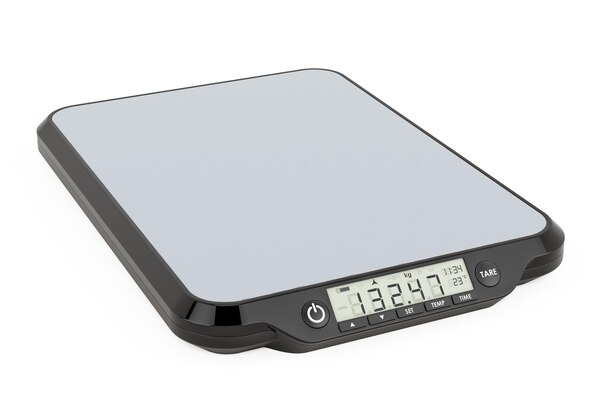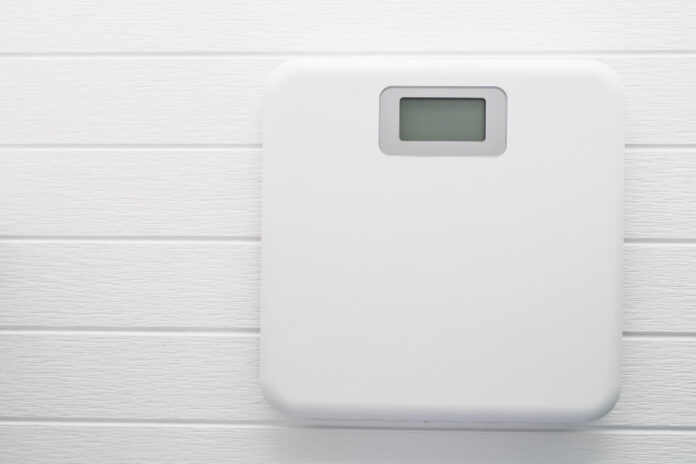Do you know what to do when using the tare function on a balance? Well, in the world of chemistry, accuracy is key. Whether you are a student in a lab or a professional conducting complex experiments, precise measurements are the cornerstone of successful results.
This brings us to a crucial tool in your chemistry toolkit: the balance. But it’s not just about weighing substances; it’s about using your balance effectively. That’s where the tare function comes into play.
So, in this post, we will be showing you that when using the tare function on a balance, start by getting your glassware on the balance and follow through with the other steps. We will explain all of this as you read on.
First, What Does the Tale Function Mean?
Primarily, the tare function on a balance is all about accuracy. The word ‘tare’ refers to the practice of subtracting the weight of the container or any material already on the scale.
Imagine pouring sugar into a bowl that’s on a scale. Without using the tare function, the scale would show the combined weight of the sugar and the bowl. But, when you press the tare button, the scale resets to zero, disregarding the weight of the bowl.
This means you only measure the weight of the sugar. It’s a simple yet effective way to ensure that you’re only measuring what you intend to, free from any additional weight.
When Using the Tare Function on a Balance, Start By – How to Use the Tare Function

Perhaps you have also seen this statement over and over on the internet, where they try to explain how to use the tare function. The only challenge is that most of them won’t complete it. You keep seeing something like, ‘When using the tare function on a balance, start by…’
However, using the tare function on a balance is a straightforward process. So, let’s break it down into simple steps.
-
Place the Glassware
When using the tare function on a balance, start by positioning your glassware – be it a beaker, flask, or any other container – on the balance. This action gives you the initial reading, which is the combined mass of the glassware and any substance it might already contain.
-
Press the Tare/Zero Button
Next, press the tare or zero button on the balance. This step is vital as it ‘zeros out’ the balance, effectively removing the mass of the glassware from the reading. What you are doing here is setting a new baseline, ensuring that only the mass of the added sample will be measured.
-
Add Your Sample
Now, carefully add the sample you want to measure into the glassware. This could be a liquid, powder, or any material relevant to your experiment. As you do this, the balance will display the weight of the sample alone, without the additional mass of the glassware.
You may also like:
- Which of the Following Are Administrative Sanctions?
- Which of the Following Is True of Unclassified Information?
- What Is Not True About DoD Travel Policy?
Why is it Important to Use the Tare Function When Weighing?
The tare function is the cornerstone of precision and accuracy in scientific measurements. Without it, you risk including the weight of your container, which can significantly skew your results. This is especially critical in chemistry, where the exact quantity of a substance can influence the outcome of a reaction or the validity of an experiment.
By using the tare function, you ensure that you’re measuring only the substance of interest, eliminating any potential errors that could arise from additional weights. This precision is not just a matter of accuracy; it’s essential for replicability in experiments, safety, and reliability of results.
So, the tare function isn’t just a feature of the balance – it’s a fundamental practice for any rigorous scientific inquiry. It simply ensures that your measurements are accurate and your experiments are based on solid, reliable data.
What Are the Best Practices While Sharing a Lab Balance with Other Students?
Sharing a lab balance with other students requires a mix of responsibility, respect, and proper technique to ensure accuracy and efficiency for everyone involved. If you are held in this position, it’s important you know what to do to ensure the quality of your experiments.
Cleanliness is Key: Always clean the balance before and after use. Residues from previous experiments can alter weights and contaminate your sample. A quick wipe with a clean, dry cloth or appropriate cleaning agent can make a big difference.
Calibrate Regularly: If your balance has been moved or used frequently, a quick calibration check is essential. This ensures that the readings are accurate for each user.
Communicate and Coordinate: In a shared environment, effective communication is crucial. Let others know when you are done using the balance, and be patient if someone else is using it. Coordinating with peers can help prevent overcrowding and rushed measurements.
Use the Tare Function Responsibly: Remember to reset the balance using the Tare function after you are done. This is courteous and saves the next user from having to account for any additional weight from containers or residues.
Record Your Readings Promptly: Once you have taken your measurements, step aside to make notes. This allows the next person to start their work without delay.
How Can I Identify Which Balance Was Used to Make Each Mass Reading?
To accurately identify which balance was used for each mass reading in a shared laboratory environment, it’s crucial to establish a systematic approach. One effective method is to label each balance with a unique identifier, such as a number or a letter.
When recording measurements, you should note this identifier alongside your readings in your lab notebooks or data sheets. This practice not only helps in tracing back to the specific balance used but also assists in monitoring the performance and calibration history of each device.
Final Note
There you have it; when using the tare function on a balance, start by placing your glassware on the balance. Then, follow the other steps we have highlighted in this post. Tare function is an important aspect of getting accurate readings in the lab. Knowing how to do it will make a whole lot of difference.







